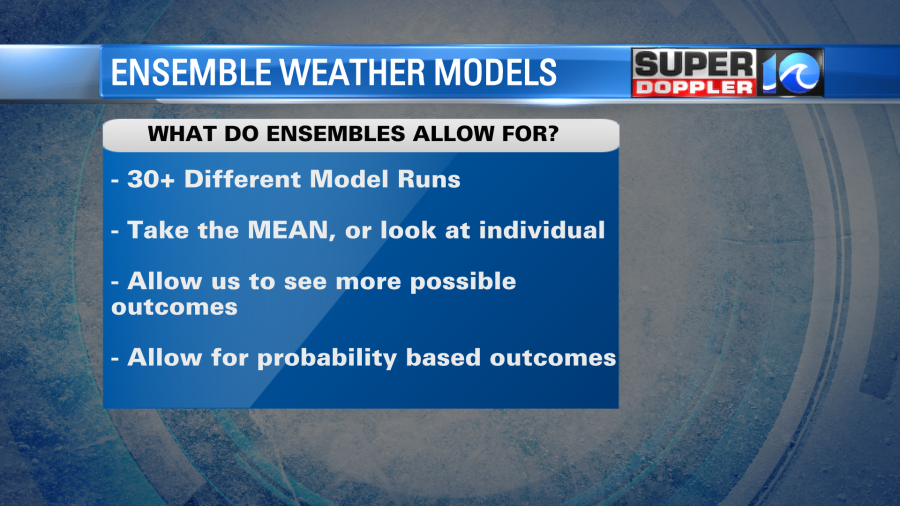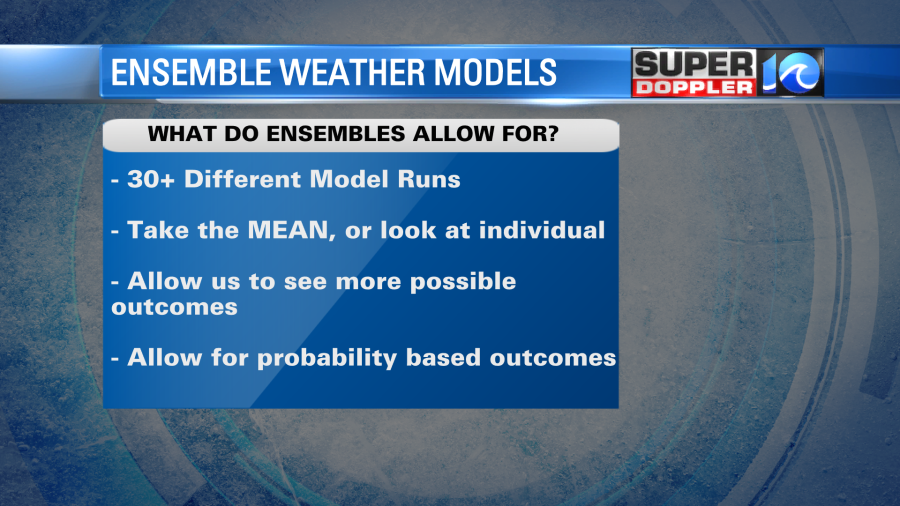(WAVY) — Model data is everywhere nowadays, but knowing what you’re looking at is important.
There are two main types of weather models – deterministic and ensemble models. The deterministic models are the ones you’re probably familiar with – the GFS, Euro, Canadian, UKMET, etc. These models take the initial conditions such as the current temperature, satellite data, pressure data, etc and compute outcomes based off of that initial data.
These deterministic models are good models – most of the time, but they’re subject to errors. If there is a slight different in what the model thinks was happening compared to what actually happened, it can cause downstream errors. We call this the butterfly effect. The further you go out in time, the more likely errors are to occur. That’s why the GFS, Euro, etc sometimes show big snow events or even hurricanes from time to time in the long range that never occur. Deterministic models are good for short and medium range forecasting, but there is something meteorologists use more often for long range forecasting – ensembles.

You can think of ensembles as a group of people in a room. All of them have likely had different experiences in their lives. If you asked their opinion on something, you’d likely get a slightly different response from each person. That’s what we do with ensemble models. We take the initial data, and then we tweak it ever so slightly – maybe changing a temperature, or the timing – to see what the outcome would be in that scenario. By doing this, we’re able to get a better idea of all of the possible scenarios.
The most common way to view ensembles is by looking at the mean of all of the ensemble members, or by looking at probability. An example of this is with snow, you can plot the % likelihood we’ll see 1″ of snow or 3″ of snow. The same thing can be done for temperature, rainfall and many other parameters.

Hopefully this helps explain some of how we forecast, especially in the days 4-7 range. As we head into hurricane season, you may also hear us talk about ensembles. These models are also run for hurricanes and can be helpful for determining the eventual track of a storm.
As always, if you have a weather question feel free to reach out on social media!





